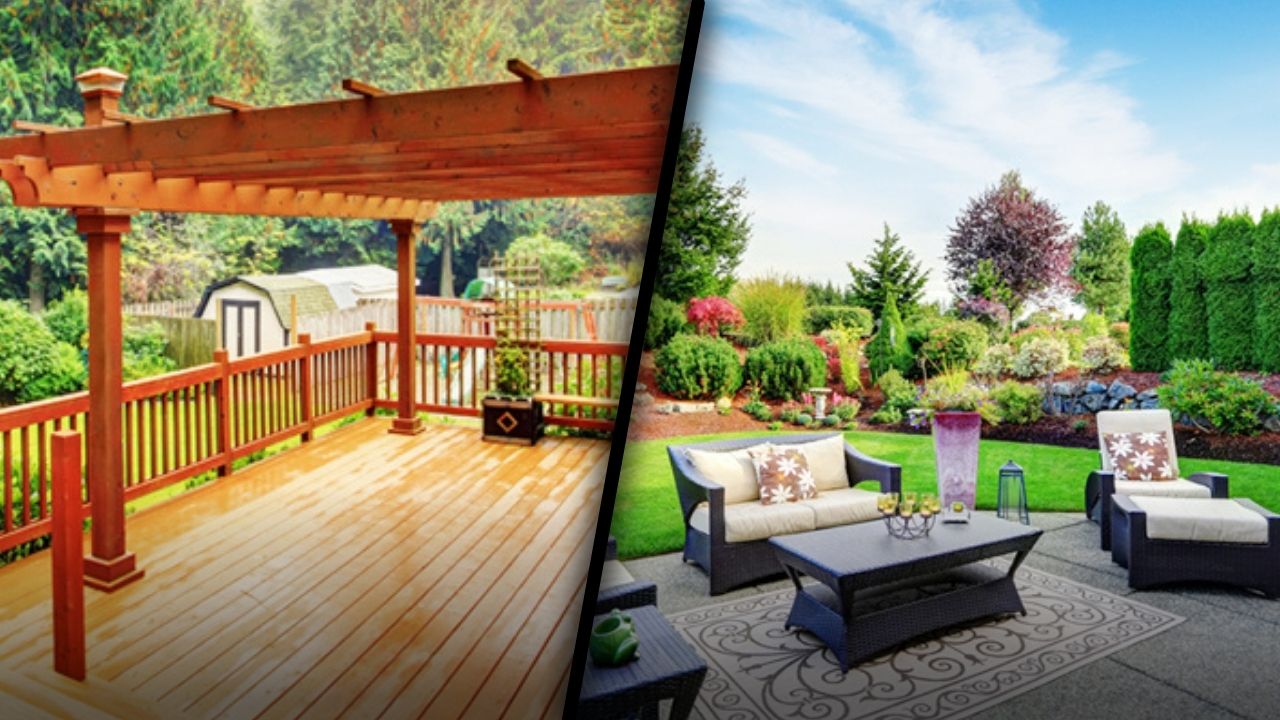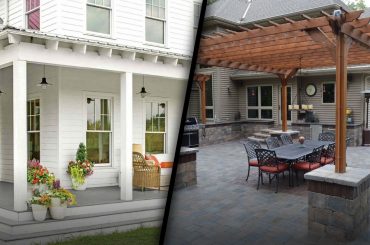In addition to providing a great living space for your family, patios and decks can also be a great addition to the resale value of your home. When deciding which of the two is the best option for your yard, it is important to consider some key differences between patios and decks. Patios and decks share many similarities, but they also differ in some key aspects. Describe the differences between the two types of flooring, their distinguishing characteristics, and how you can choose the right one for your home and lifestyle? Here’s what you need to know!
What Is a Patio?
The Spanish term patio literally translates to courtyard, though it differs from the modern definition of a courtyard because there are no walls around it. Usually located in the backyard, a patio is an area of concrete adjacent to a house’s exterior.
Location
Patios are often connected directly to a house’s front or back, but they can also be separate structures that are located further away. As an outdoor dining area, a patio is often used for outdoor dining, and food can be conveniently and easily transported outside thanks to its proximity to the house. In stark contrast to a deck, a patio is a flat slab of concrete built directly on the ground, without any significant elevation.
Size
Depending on the patio size and design, some may only fit two rocking chairs and a fire pit, while others may be large enough to accommodate a hot tub, multiple seating areas and a dining set. There are times when a patio wraps around a house or surrounds a swimming pool, and other times when it’s a square or rectangle slab that leads to the kitchen through French doors. When it comes to deciding what size patio to build, backyard size and budget are the two most important factors.
Construction
A patio is often constructed with concrete, but it can also be constructed with large paving stones, tiles, or bricks. Most patios consist of a horizontal slab on the ground, which is not usually enclosed by walls, but sometimes a pergola is erected to provide shade, comfort and visual interest. It is a costly investment to pour poured concrete slabs, and they need to be sealed to prevent weather damage. Although concrete pavers and tile may be more expensive upfront, gravel is less costly and easier to maintain.
What Is a Deck?
Originally, the word deck described the horizontal surface of a ship along its length. Architecture-speaking, a deck is a structure that has one or more levels and is designed to extend living space outside, enjoy a view, and either connect to a house or stand alone.
Location
Decks are typically located at the back of houses and overlook backyards. There are a variety of ways to access it, but the most common is through a kitchen, living room, or family room. This is not a patio, since it is raised, sometimes to the second or third floor, rather than built directly on the ground.
Size
As the deck grows, it should be proportional to the house, with a small deck off the kitchen to a multi-level outdoor space with plenty of space for activities during the warm weather. As with patios, the size of a deck depends on how large your backyard is, how much furniture you want to store on it, and how much you can afford.
Construction
Depending on the look that you envision, the amount of upkeep you are comfortable with, and your budget, wood, composite wood, or vinyl are the primary materials used for deck construction. Consider keeping your cedar or pine deck in good condition by refreshing the paint or stain every couple of years and replacing any loose screws or boards so that you can use it safely. A wood deck can warp or sustain as much weather-induced damage as a composite wood deck, which lasts for longer. Vinyl decking is just as durable, but doesn’t require as much maintenance.
For safety reasons, a deck requires a railing instead of a patio. And some decks have a staircase leading into the backyard as well. A patio and a deck can sometimes be found on larger properties, sometimes in combination, with the patio on the ground level and one or more deck levels above.
Differences Between a Patio and a Deck
Patio
- Ground-level construction
- Railings are not required
- A single level is present
- Concrete, tiles, or gravel are used in construction
Deck
- Located on an elevated platform
- Railings are required
- Multiple levels are possible
- Vinyl, wood composites or wood composites
How to Decide Between a Patio and a Deck
In order to decide which of the two to build in your backyard, it’s important to understand what a patio and a deck are and what their characteristics are. You should take into account your home’s style, size, and the main activities that you want to accommodate with the structure, as well as your budget. While there is some maintenance required for both types of structures, maintenance for a deck is more demanding and, therefore, more costly. Building a patio or deck may require permits or inspections, as with any other home project. Check your local zoning laws first.



